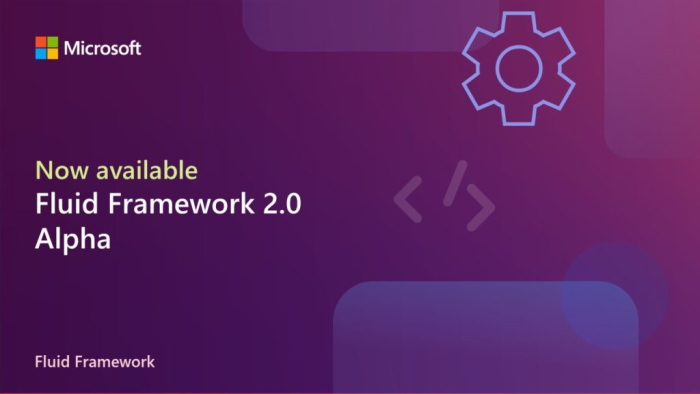Fluid Framework is thrilled to announce the availability of Fluid Framework 2.0 Alpha. This highly anticipated release introduces a host of new features, including SharedTree, a robust Distributed Data Structure (DDS), and an enhanced developer experience with the Fluid Developer Tools. As we strive toward Beta releases, additional exciting features will be unveiled in the coming months.

Fluid Framework is a cutting-edge client/server tech stack that empowers real-time collaboration. By providing developers with user-friendly data structures, Fluid automatically synchronizes data across clients, effortlessly managing the complexities of merging changes from multiple sources. This eliminates the need for application teams to write custom server code or navigate intricate merge semantics, streamlining the collaboration process. Fluid embraces an accessible programming model that leverages mainstream web technology while delivering exceptional performance, accuracy, and cost efficiency.
SharedTree Distributed Data Structure
SharedTree, an integral part of Fluid Framework 2.0, revolutionizes the synchronization of hierarchical data between clients. This innovative Distributed Data Structure offers an intuitive programming interface, supporting a wide array of data types and internal data structures. SharedTree allows developers to work with collaborative data using familiar patterns akin to local object models, with the added advantage of remote data modification capabilities.
To enhance reliability, SharedTree incorporates features like atomic move operations, mitigating the risk of errors when working with collaborative data. Its development is driven by invaluable feedback from developers seeking Fluid data structures that closely align with document object models, inheritance trees, and other prevalent use cases for hierarchical data.
Fluid Developer Tools
The Fluid Developer Tools, available as a browser extension, elevate the developer experience during the creation and debugging of Fluid applications. As Fluid Framework simplifies the complexities of real-time collaboration, it is essential for developers to have access to the underlying state. The Fluid Developer Tools offer the following features:
- Visualization of container state and data
- Capability to modify container state for offline testing and reconnection scenarios
- Insight into audience membership, permissions, and join/leave logs
- Framework event logs
- Performance telemetry graphs
The Fluid Developer Tools are readily accessible in the Edge and Chrome browser extension stores.
While we encourage you to explore the exciting new features in the Fluid Framework 2.0 Alpha release, we recommend refraining from using them in production scenarios for now, as we anticipate making breaking API changes before reaching production readiness. Please report any issues you encounter with this release on the Fluid Framework's Github page.
Please visit Microsoft's Dev Blogs website for more details.


Comments (0)